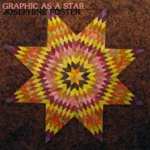|
|
 |
Dusted Reviews
Artist: Josephine Foster Album: Graphic as a Star Label: Fire Review date: Feb. 24, 2010 |

|
|
|
 |
Graphic as a Star is a delicate, dark and quietly ambitious 26-track song-cycle based on the poetry of Emily Dickinson. Equipped with a hauntingly lovely voice suited for the folk forms she trades in, Foster reminds one of English singers such as Shirley Collins and Anne Briggs in her plaintive nakedness, while occasionally recalling Karen Dalton with her soulful, off-kilter warble.
Musically, Graphic as a Star is stripped-down, raw and, at times, quite somber, even more so than Foster’s previous efforts. Most songs consist of just Foster’s voice and a simple acoustic guitar. And though a few songs are augmented by the sound of chirping birds or an isolated Dylanesque harmonica passage, there is nary a trace of the lush sonics or tweaked jazz references that Foster has employed in the past. While these skeletal arrangements should serve to spotlight, or at the very least recast, Dickinson’s poems, the powerful nuance of her verse feels almost swallowed up by Foster’s songs, the evocation of Dickinson’s complex sense of personal isolation trumped by Foster’s unwavering aesthetic of lonesomeness.
Of course, one needn’t be a Dickinson scholar (or even particularly familiar with her, frankly) to approach this album on a basic level. It is simple, and sometimes quite beautiful. As a means for exploring Dickinson, however, Graphic as a Star can be frustrating.
Many of the tracks are quite short, clocking it at less than 60 seconds, and feel more like sketches. They follow a given poem to its conclusion, and end. There’s nothing inherently wrong with this approach, and if stripped of context, these succinct numbers can be quite moving in their intimacy. But while a short poem by Emily Dickinson can provide hours (a lifetime, even) of contemplation, Foster’s 56-second folk melodies generally don’t. In fact, they often give short shrift to the vast range of emotions buried within a few lines of verse.
Despite Foster’s admirable attempts, the depth of Dickinson’s work doesn’t translate to song easily, though the near-perfect synthesis of music, verse and voice on "My Life had stood-a Loaded Gun" and "I could bring You Jewels-had I a mind to" prove that it is possible. Ultimately, as the disc draws to a close and one hushed sonic wisp after another drifts by, justice is done to neither Foster’s considerable talents nor Dickinson’s genius.
By Nate Knaebel
|







